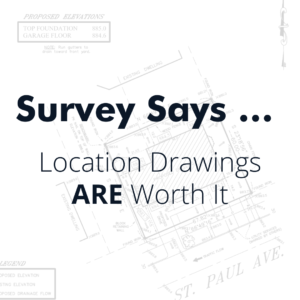 What if I told you there was a major problem with the property you are about to buy?
What if I told you there was a major problem with the property you are about to buy?
To identify the problem, YOU would need to read and visualize meets & bounds descriptions that read something like this:
“From the Northwest 1/4 of Section 21, run South 00 37’51” West along the West line of said Northwest 1/4 at a distance of 50.00 feet to the Point of Beginning on the Southwest right-of-way of Country Club Drive … ”
You follow all that? You’ll need to because that is the start of a very complicated, extremely detailed, two-page property legal description. Somewhere buried in that text, you might find something that can be roughly translated to read, “Sorry, you don’t actually own your own driveway. If that’s a problem, you just have to deal with it.”
If you don’t speak Meets & Bounds, there’s another avenue. Would you feel better purchasing this property if I showed this to you as a picture that indicated everything was OK?
Well, that my friend is a type of survey we call a Location Drawing. It’s one of the easiest and most affordable ways to stop you from buying a big mistake!
A location drawing is a sketch prepared by a professional surveyor. It shows the boundaries of a particular property. It typically includes the dimensions of the house, deck and structures, as well as the locations of fences, encroachments, easements or rights of way.
Over the years, we’ve seen many homeowners surprised to find out that:
They did not own their driveway
There was an easement preventing planned improvements
Their house was over the property line
The neighbor’s fence was inside their yard
Some of the property they thought was their yard belonged to a neighbor
Fun stuff like that, plus a lot more complicated scenarios that we won’t even dive into on this blog.
Here are a few things you need to know about location drawings:
1) You need to opt in. Location drawings used to be required, but now they are optional. We always make a point to ask whether borrowers want one. But you must inform your title company that you want one.
2) If you don’t get one, it is an exception in your owner’s title insurance policy. This means you may not be covered against a claim, and the cost of addressing it may come from your pocket.
3) It’s usually less than $300. Boundary surveys can be more expensive. This is when a surveyor comes out to stake or flag the property lines.
The bottom line is that if you want to protect yourself from an unpleasant surprise somewhere down the road, a location drawing could be a smart move for you.
